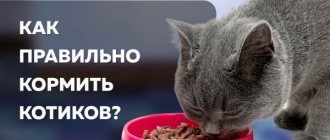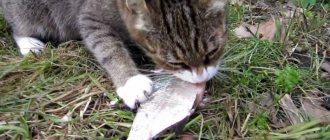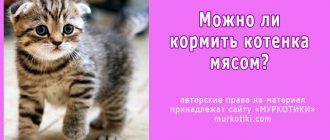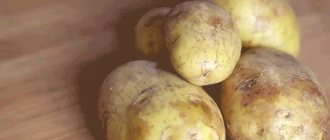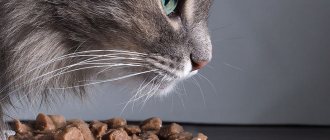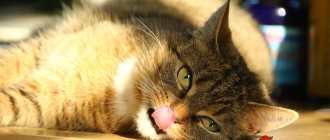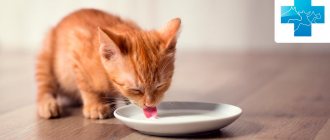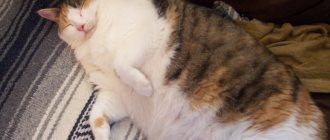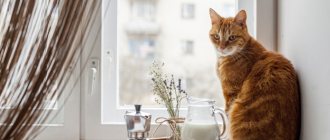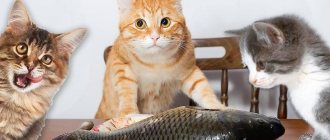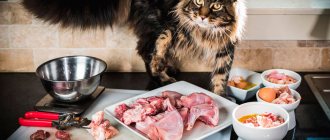How to feed your cat properly with natural food
You cannot feed an animal food from a human table: a cat has its own digestive system, different from a human one, and therefore many human dishes can be harmful, lead to illness, and in some cases, the death of a pet.
A cat by nature is a predator, so the basis of its diet will always be protein foods. Hormonal levels and the production of enzymes, the stability of the immune system and the maintenance of water-salt balance depend on the consumption of protein, especially of animal origin.
A balanced diet should contain fats. They saturate the body with fatty acids, which are necessary for cell growth and regeneration.
Vegetables do not play a big role in the diet of cats, but they are a source of vitamins and normalize intestinal function, so it is necessary to introduce a small amount of vegetables into the diet, such as:
- carrot;
- cabbage;
- cucumbers;
- salad;
- pumpkin;
- zucchini.
Important! Cat foods are cooked or fed raw. To preserve the health of your pet, cooking methods such as frying, baking, and smoking are unacceptable.
Meat and offal
The basis of a healthy diet for representatives of the cat family is meat and meat by-products.
Cats can and should be fed the following meat products:
- Beef is the basis of the diet, the main thing is that it is not too fatty.
- Lamb, horse meat, and rabbit meat are quite acceptable in the diet of cats 2-3 times a week.
- Chicken or turkey can replace up to half of the meat diet. It is not advisable to feed poultry skin to cats: it contains too much fat.
- By-products - heart, kidneys, liver - are acceptable in the diet in moderation and pre-frozen.
Frozen meat must be thawed and doused with boiling water, warmed to room temperature and only then given to the animal.
Important! Pork is contraindicated for cats: it contains too much fat and is difficult to digest in the gastrointestinal tract.
Dairy products
Dairy products are necessary for the cat's body as a source of animal protein, but natural milk is practically not absorbed by the digestive system, since the body does not produce a special enzyme to break down lactose.
But fermented milk products, on which various bacteria and rods have already worked, are perfectly digestible:
- kefir;
- cottage cheese;
- fermented baked milk;
- low-fat sour cream;
- yogurt.
All these fermented milk delicacies can be present in a cat’s diet every day, but always in small portions; they cannot be made the main dish.
Attention! Do not give animals fermented milk products with a long shelf life with preservatives. Products suitable for cats have a short shelf life - from three days to a week.
Fish as a basis for natural food
The basis of natural feeding for a cat should still be meat. It will not be possible to completely replace it with fish. Thawed sea or ocean fish can be given two to three times a week, replacing meat with it. Raw fish is given to the animal along with the bones: this is beneficial for the functioning of the cat’s digestive tract.
Attention! In boiled fish, the bones must be removed, since the bone in the boiled mass is easily separated from the fibers and can be swallowed whole by the animal.
Other foods for a healthy diet
You can include porridge made from rice or buckwheat in your diet. But only occasionally and little by little, you cannot constantly feed the animal with cereals.
Cereals are not healthy for a cat’s diet: they contain too many carbohydrates, which can cause an imbalance in the digestive system and destroy the intestinal microflora, which will lead to dysbiosis and a decline in overall immunity.
Attention! A large amount of carbohydrates in a cat’s diet causes problems with the functioning of internal organs, can provoke allergic reactions and lead to excess weight gain.
Special daily food for adult cats
The following products meet the cat's needs:
- Acana Wild Prairie Cat is made from fresh and dehydrated meat and giblets of chicken and turkey, containing fish components: herring meal, trout, pike perch. The amount of protein components reaches 75%, the rest is vegetables, fruits, herbs. Grain crops are replaced by peas, beans, chickpeas, and lentils.
- Orijen Cat & Kitten is intended for cats and kittens, 85% ingredients of animal origin, of which 40% fresh protein. There are no food additives; sources of vitamins are vegetables, berries, and fruits.
- Eukanuba Adult Top Condition contains 41% animal protein, it is represented by freeze-dried chicken meat, liver, and offal. Rice and wheat are sources of carbohydrates; valuable additives include fish oil and probiotics.
- Grandorf Adult Indoor is made from dried and fresh meat of turkey, duck, rabbit, and lamb. Useful additives include salmon oil, taurine, brewer's yeast, and flaxseeds. The food is suitable for cats with allergies; it does not contain wheat, chicken or corn, which often give a negative reaction.
- Fitmin cat For Life Salmon is created on the basis of fresh salmon and dried poultry, fish, and pork liver. Salmon oil, flax seeds are present, rice is used from cereal crops.
These foods are more expensive than economy-class products, but to satiate them you need 2 times less:
| Cat weight | Daily norm |
| Akana | |
| 2 | 40 |
| 3 | 45 |
| 4 | 60 |
| 5 | 75 |
| 6 | 80 |
| 8 | 90 |
| 10 | 120 |
| Orijen | |
| 2 | 35 |
| 3 | 45 |
| 4 | 65 |
| 5 | 65 |
| 6 | 85 |
| 8 | 100 |
| 10 | 115 |
| Eukanuba | |
| 2 | 25–35 |
| 4 | 50–70 |
| 6 | 75–105 |
| 8 | 100–140 |
| 10 | 125–170 |
| Grandorf | |
| 1,5–3 | 20–45 |
| 4–5 | 55–65 |
| 6–8 | 75–95 |
| Fitmin | |
| 2–3 | 24–45 |
| 3–5 | 35–75 |
| 5–7 | 65–95 |
| 7– 0 | 85–115 |
Dry granules are given twice a day, the norm per day is divided according to the number of meals. A proper diet or balanced industrial food will help maintain your cat’s health, positive mood and well-groomed appearance.
What not to feed cats
Cats eat food from the human table with enviable pleasure, and many owners watch with emotion as the animal happily treats itself to candy or a piece of chocolate, licks ice cream or eats a slice of melon, peach, tomato, sausage, or cheese.
Of course, a one-time consumption of a small amount of products that are exotic for the cat’s body is unlikely to lead to a serious illness, but you cannot constantly give such products to an animal: this can cause a chronic disease and significantly reduce the pet’s life expectancy.
The following foods should not be included in cat food:
- Fresh milk - this leads to impaired intestinal motility and indigestion.
- Food from the table - salt and seasonings contained in human food can even cause poisoning. And sausage, for example, contains soy products and a lot of fats, which are harmful to the cat's health.
- Sweets - carbohydrates are harmful to cats, since sugar is not processed at all by the digestive system.
- Coffee and alcohol are poisons for animals.
- Raw unprocessed meat and river fish - it is better to give the meat boiled or at least pour boiling water over it, since there is a high possibility of infection with helminths. River fish can be present in a cat's food only in boiled form, with selected bones.
- Pork – contains too much fat that the animal’s stomach may not be able to handle.
- Tubular or sharp bones - damage to the esophagus or stomach will definitely lead to the death of the pet.
Eating such products by an animal will inevitably lead to illness and deterioration in health.
Veterinarian advice
There are several tips that experienced veterinarians give to cat owners who want to feed their pets natural products:
- You cannot feed fermented milk and meat products to an animal at the same feeding. Fermented milk products are given at one meal, and meat at another.
- Fermented milk products can be given separately or mixed together; only bran or half a raw egg can be added to them.
- Meat feeding is either meat, fish, or offal. You should not mix foods in one feeding.
The cat should always have a bowl of clean, fresh water: the animal should be able to replenish the lack of moisture in the body when it needs it.
Flour foods and diabetes
If an animal has a disease such as diabetes, then flour food is strictly contraindicated for it. A carbohydrate-free diet is indicated for feeding animals with this disease.
Eating food high in carbohydrates will aggravate the disease and may lead to the death of the animal.
Attention! Cats are not recommended to eat food containing large amounts of carbohydrates.
About feeding with prepared foods
The desire to add variety to the cat menu is due to two main reasons:
- lack of understanding of what complete dry food is;
- humanizing the pet and transferring your own needs to it.
What is dry food?
Some owners think that dry food is an analogue of human junk food: you can snack when you have nothing else, but it is not suitable for constant use. In fact, if the food is complete, it is more like a complete diet for astronauts.
This is a concentrated nutritional mixture that contains all the necessary macro- and micronutrients in optimal proportions, which means it does not require any supplements. In an effort to “improve” such a diet, you will only upset the balance of substances, which was developed by specialists and calculated with milligram accuracy. Over time, this can lead to an excess or deficiency of certain elements in the cat’s body, causing malfunctions in its functioning.
For example, each bowl of Acana Grasslands Cats dry food contains several types of meat, poultry and fish, fresh whole eggs, valuable poultry and lamb entrails, vegetables, berries, unsweetened fruits and herbs, mineral supplements and probiotics. Are you sure that this diet needs to be expanded?
Cats and diversity
Humanizing a pet and attributing suffering to it due to monotony in a bowl is also wrong. Careful observation of cats and cats allows us to come to the conclusion that these animals are very conservative when it comes to nutrition. Most of them are distrustful of any innovations on the menu. Sometimes owners who, for medical reasons, need to switch their cat to another brand of food or a therapeutic diet face serious resistance. While dogs perceive such changes relatively calmly.
Of course, some food with a strong meaty aroma can attract cats like a magnet, and then they do everything to beg their owner for a “yummy treat.” However, it is still wrong to believe that they get tired of food.
Advantages and disadvantages of natural nutrition
Feeding your cat natural foods has its advantages and disadvantages.
The main disadvantages are:
- the difficulty of creating a balanced diet;
- the need to give the animal separate vitamin and mineral complexes;
- short shelf life of the finished dish.
Advantages:
- ability to control quality;
- lower cost of products compared to ready-made feed;
- natural products are closer to natural nutrition;
- absence of dyes and preservatives in food.
Proper home nutrition prevents the occurrence of chronic diseases and allows the cat to lead a more active lifestyle.
It should be understood that when deciding to feed your pet natural products, the owner will have to spend part of his free time preparing food for the animal.
General recommendations
Not all cats can dose their food, so you need to leave food in a certain portion. Constant access to food is unacceptable, otherwise the pet faces obesity. But clean and fresh water should always be within the animal’s field of vision. The more often the water is changed (2-3 times a day), the better for the pet. The bowl for water should be large. Read about how many times a day you need to feed your cat here.
Combining several types of food when feeding an animal is harmful to the cat’s stomach. There should be one type of food (store-bought food or homemade food). It is better to stick to one brand of food. Then the cat will be healthy, active and live long.
Table: healthy and prohibited foods in a cat’s diet
The table below lists foods that can and cannot be given to a cat:
| Healthy | Harmful |
| Meat other than pork | Bread and flour products |
| By-products | Legumes and soybeans |
| Vegetables with low starch content | Potatoes and corn |
| Sea fish | Sweets |
| Cereals: rice and buckwheat | Chicken hollow bones |
| Dairy products | Fruits |
| Greenery | Fresh milk |
Natural menu for cats every day for 7 days
For an adult animal, it is enough to divide the daily diet into two times, especially if it lives in a small apartment and does not have the opportunity to walk.
Sample menu for the week:
- Breakfast - chopped beef mixed with grated vegetables, dinner - cottage cheese mixed with half an egg.
- Breakfast - boiled chicken with rice, dinner - a piece of liver or heart.
- Breakfast - cottage cheese with low-calorie sour cream, dinner - chicken necks.
- Breakfast - boiled boneless fish, dinner - grated vegetables and beef.
- Breakfast – chicken with buckwheat and chopped herbs, dinner – kefir and egg.
- Breakfast - offal and boiled rice, dinner - chicken necks.
- Breakfast - fermented baked milk and buckwheat, dinner - defrosted sea fish.
By alternating foods, you can feed your animal tasty and inexpensive, maintaining the balance of nutrients it needs.
Important! The owner must remember that a cat with a natural diet must be given vitamin and mineral preparations for preventive purposes.
Basic rules for feeding an adult cat
Supporters of natural food select products every day and prepare them especially for the cat; this requires free time. It is easier for busy people to feed their animals with commercially balanced products: choose the right brand and follow the manufacturers’ recommendations.
When eating natural food, adhere to the following rules:
- The cat is fed twice a day; an adult animal requires 35–60 g of food per 1 kg of weight per day.
- Three quarters of a healthy diet consists of proteins, the rest - fats and carbohydrates.
- Meat and vegetables are given both boiled and raw: after heat treatment, the food is safer, but the vitamins are destroyed.
- Large pieces are crushed into pieces 1–2 cm in size, so nutrients are better absorbed. Constantly feeding soft, porridge-like food is harmful to teeth: without stress, they are destroyed.
- Food at room temperature or slightly warm is better digested.
Ready-made food is selected according to the age and health status of the pet, and the daily norm is observed. It is not mixed with natural ingredients to avoid an imbalance of vitamins, microelements and gastrointestinal disorders. Digestion is adjusted to a specific type of food, so it takes 10–14 days to transfer from one food option to another.
How to switch an animal to natural food
It’s good when a kitten is accustomed to natural products from childhood, but it is quite possible to retrain a cat that is accustomed to dry food. If you change food suddenly, the animal may become stubborn, refuse to eat and go hungry for several days. To make the transition painless, you will have to try a little.
Natural food should be mixed in a small amount into the daily portion of dry food, replacing approximately 10% at first. Gradually, the share of natural food should be increased, and dry food should be reduced. After two weeks, you can completely switch to natural nutrition.
Features of nutrition of different categories of animals
Some categories of animals have their own feeding habits depending on age and position.
Sterilized pets
Portions for spayed and neutered pets must be strictly adjusted. Such animals should not be overfed. If the animal gains excess weight, then you need to reduce the portion or switch to foods with lower calorie content.
Kittens
Milk should be present in the kitten’s daily diet; meat is given ground in a blender or meat grinder; the daily portion is divided into 5-6 meals.
Pregnant and lactating cats
The nutrition of a pregnant and lactating cat must be enhanced; you need to rely on the animal itself and the kittens that it carries and feeds.
Attention! After the animal eats food, the cup with leftover food must be removed; the food should not sit and sour all day.
Nutrition for pregnant and lactating cats
In order for cats to feel good during pregnancy and not have any health problems, special attention should be paid to their nutrition. The menu should be balanced, it should contain all the necessary vitamins and substances to strengthen the immune system.
Dietary recommendations for a pregnant cat:
- You shouldn’t suddenly change your diet; your pet can be given the same foods and feeds that she was used to eating before pregnancy;
- Additionally, you can include food specifically for pregnant cats;
- Veterinarians do not advise giving fish to animals when carrying kittens. But if your pet demands fish, then you can give her a small piece, but only boiled;
- from natural products you can use veal, chicken, broth, some boiled eggs, dairy products (kefir, natural yogurt, cottage cheese), cereals, boiled vegetables;
- Additionally, you can give vitamins for pregnant cats.
Sample recipes for cats
Cooking for cats is not difficult, the main thing is that you don’t need to add salt, pepper or sugar:
- Mix low-fat cottage cheese with half a chicken egg, and the dish is ready.
- Finely chop the vegetables, boil and mash with a fork, add finely chopped meat or minced meat, a few drops of vegetable oil. You can give it in the form of porridge, or you can dilute it with broth.
- Finely chop the offal and mix with finely grated vegetables.
- Cut the chicken meat into pieces and boil for ten minutes in a small amount of broth, add a little buckwheat or rice and after a couple of minutes turn off the stove, leave under the closed lid for about twenty minutes.
It is not necessary to cook for your pet at once; you can store the prepared food in the refrigerator. Warm the food to room temperature before serving.
